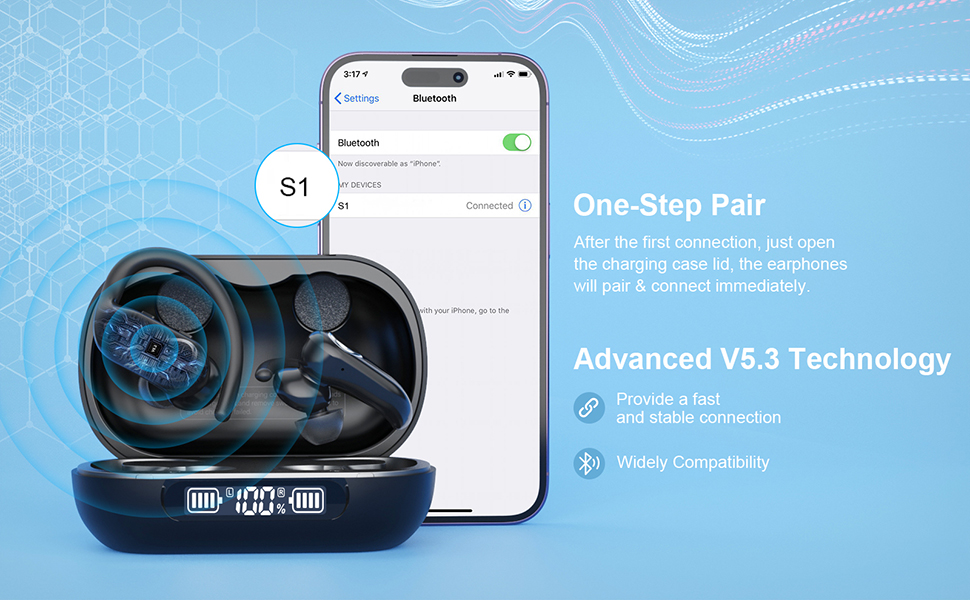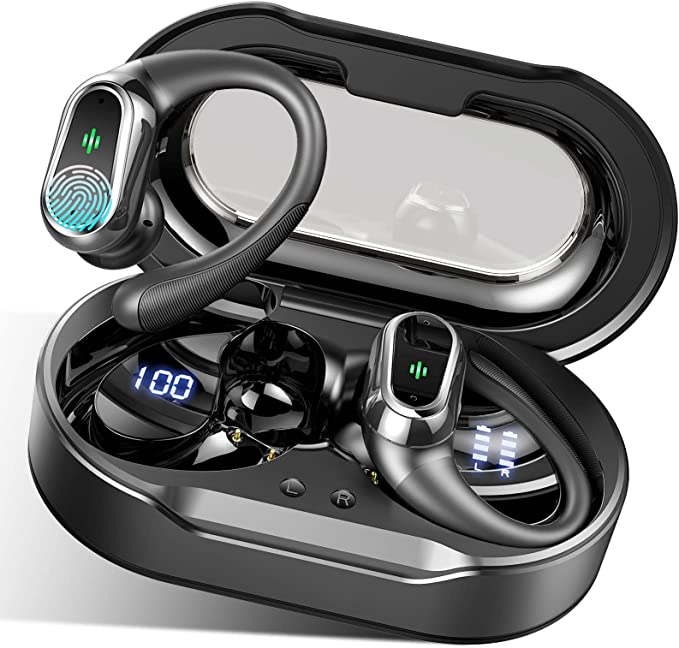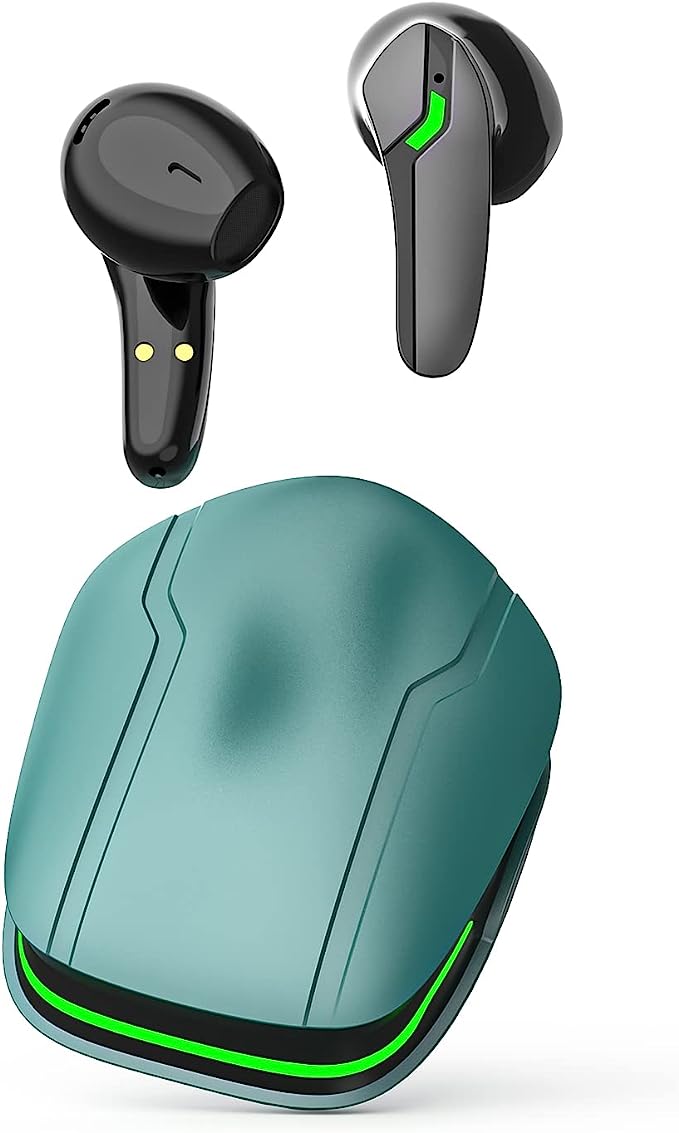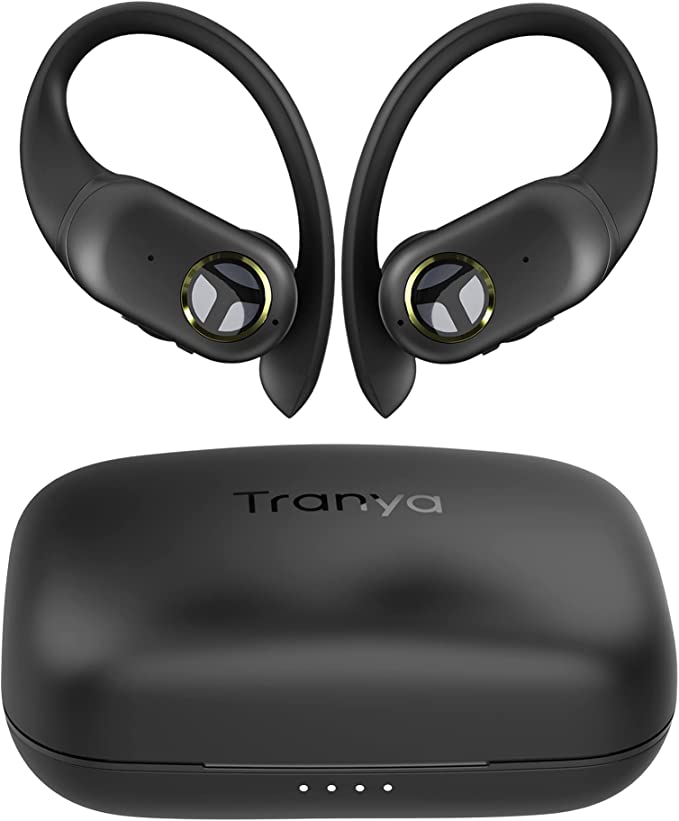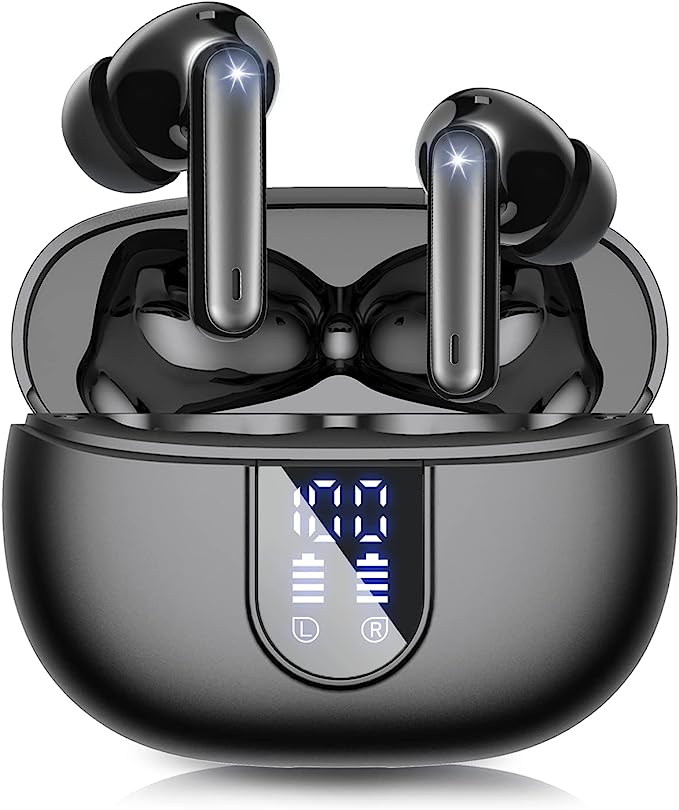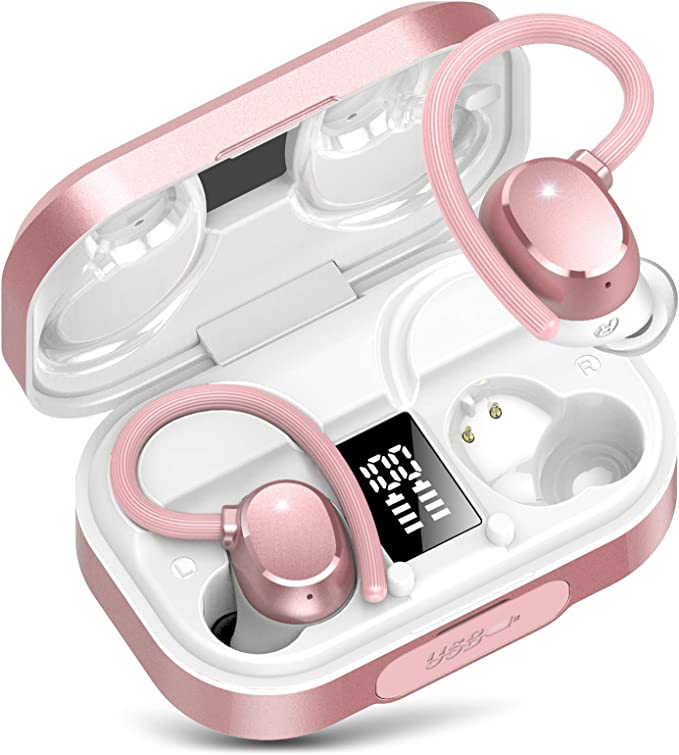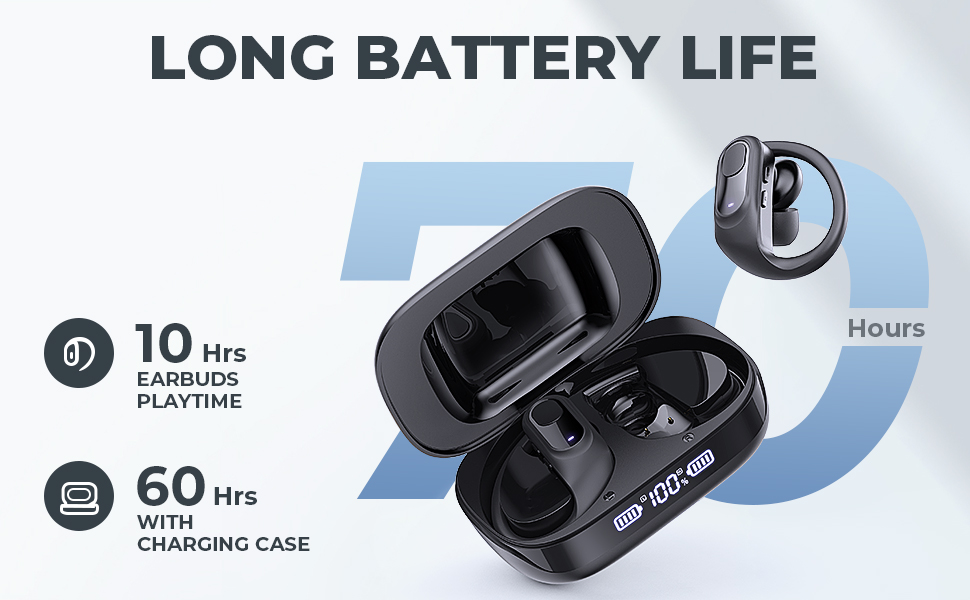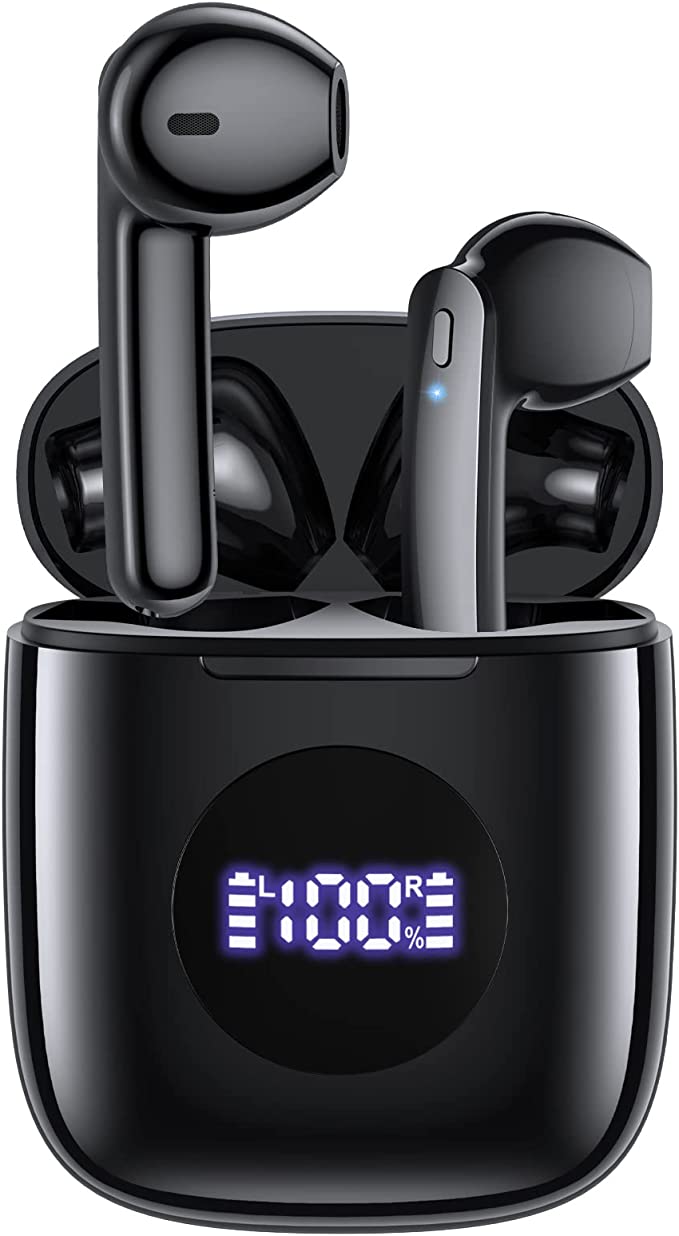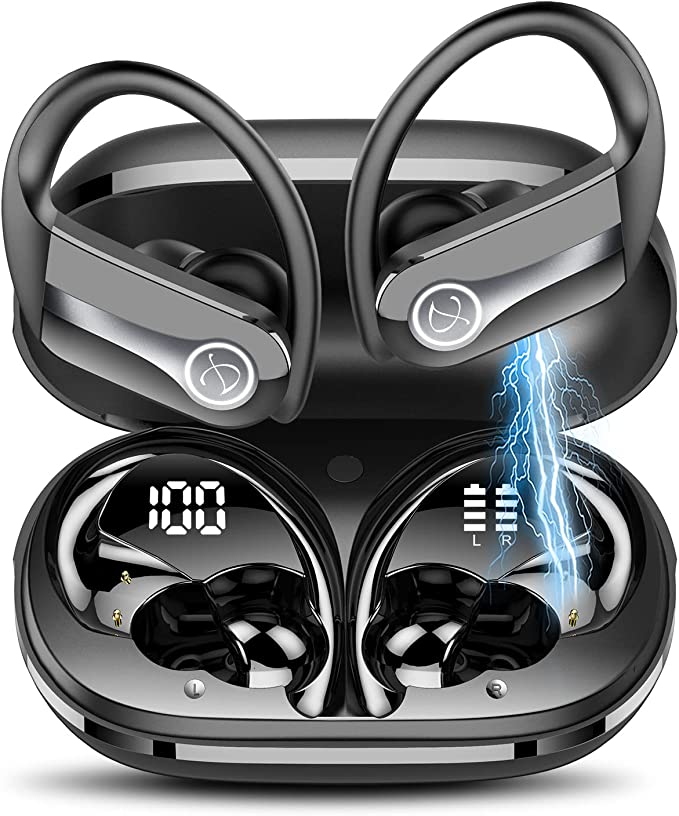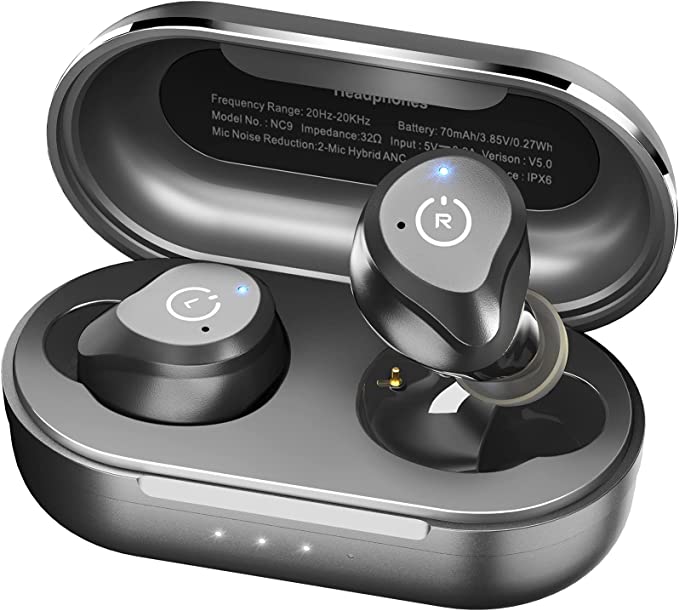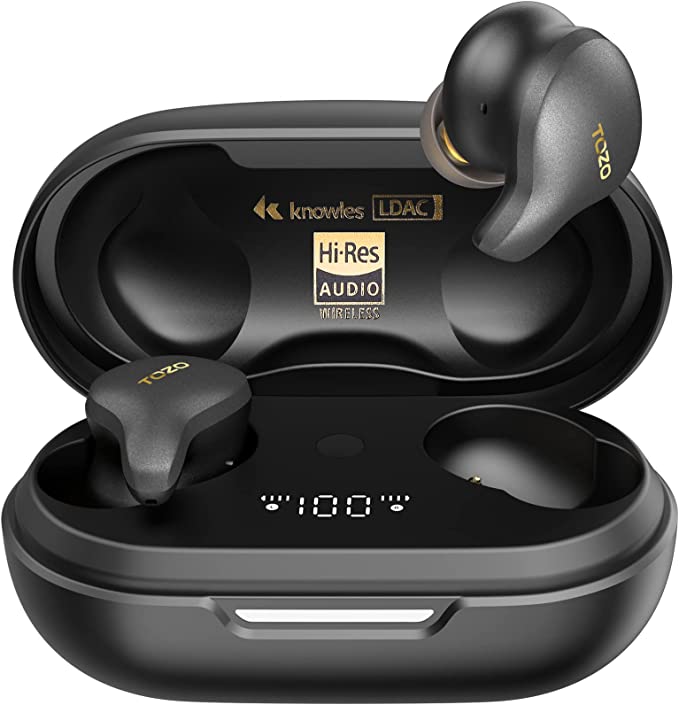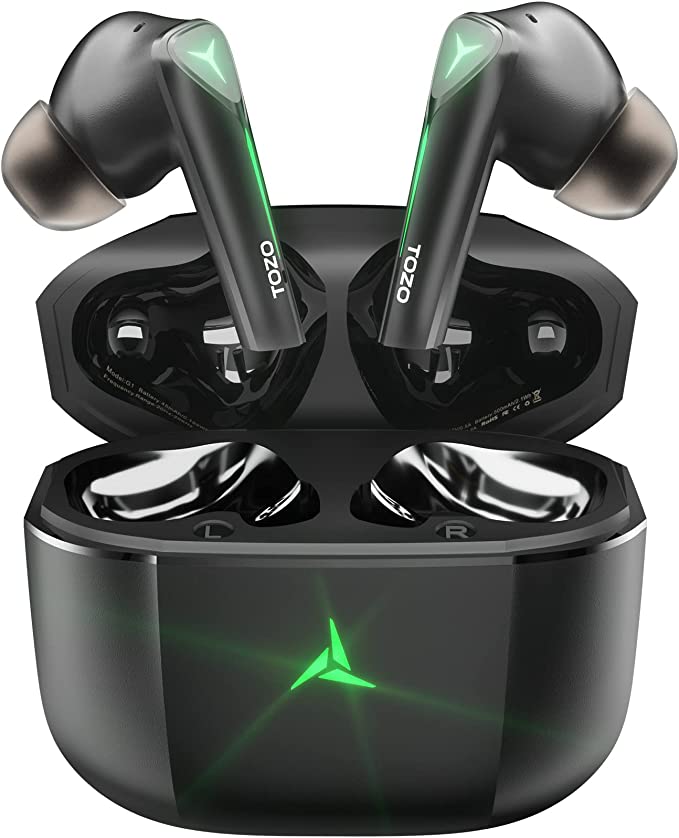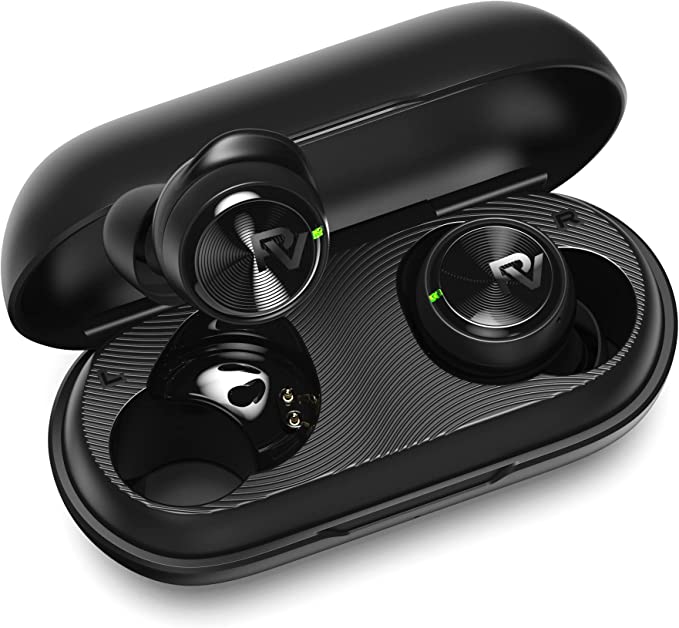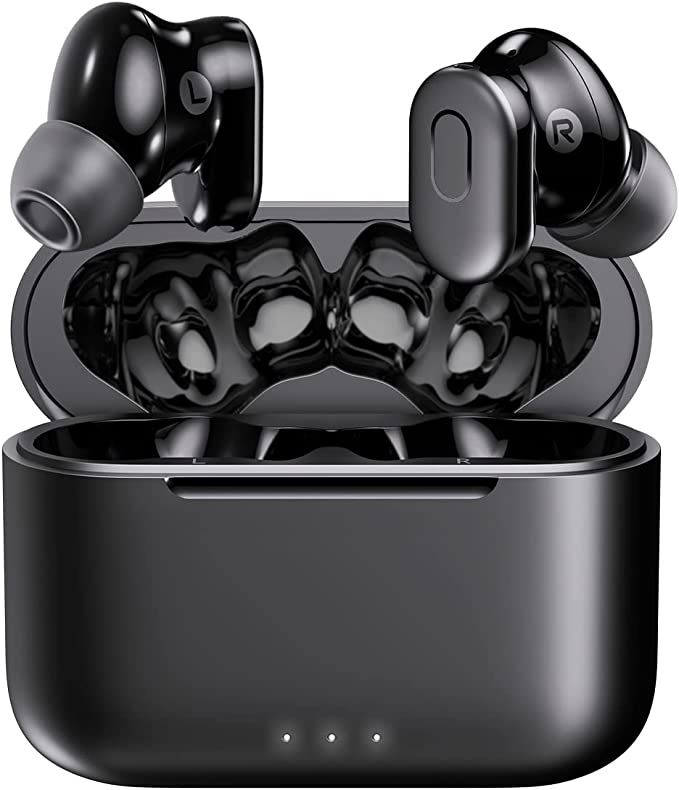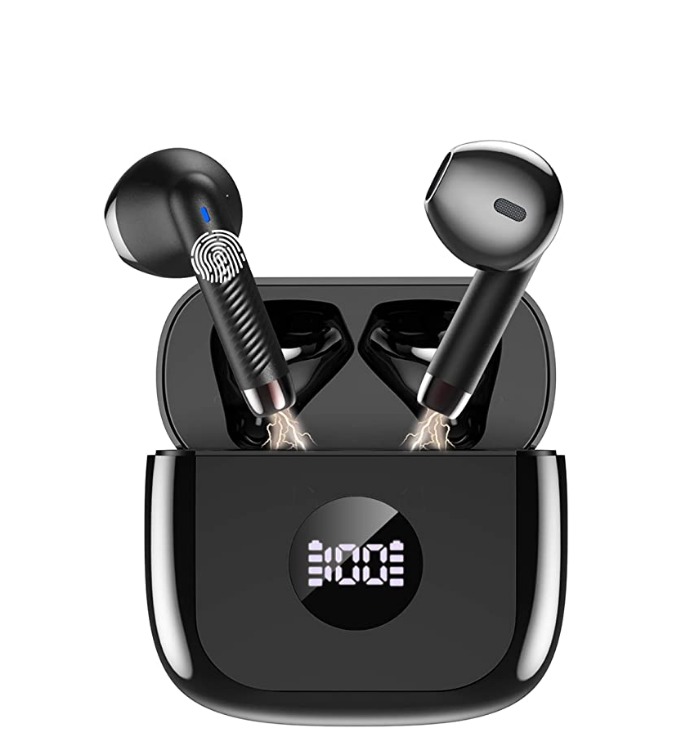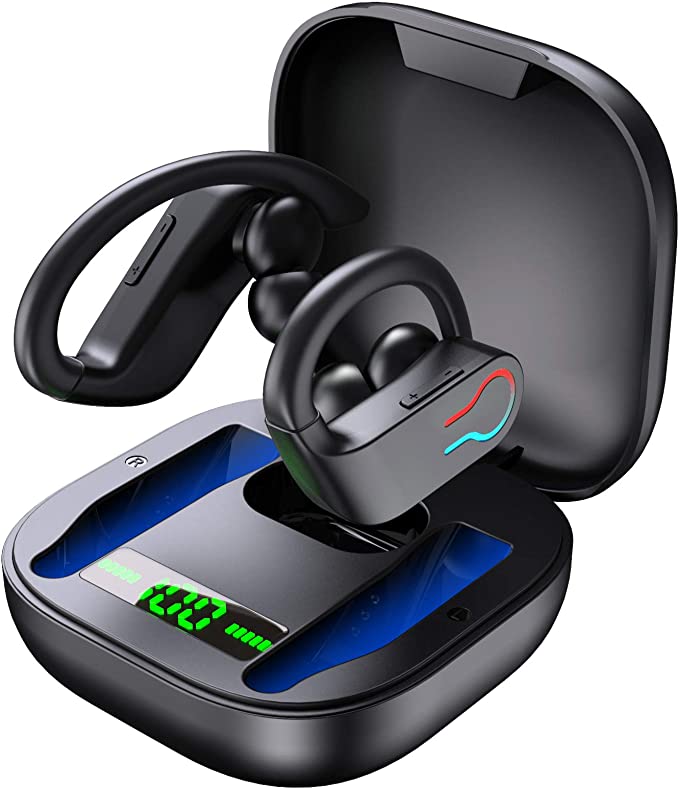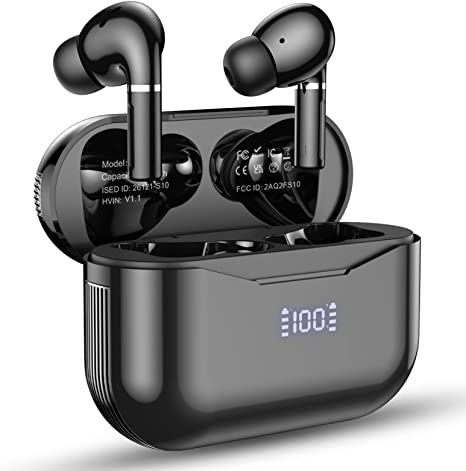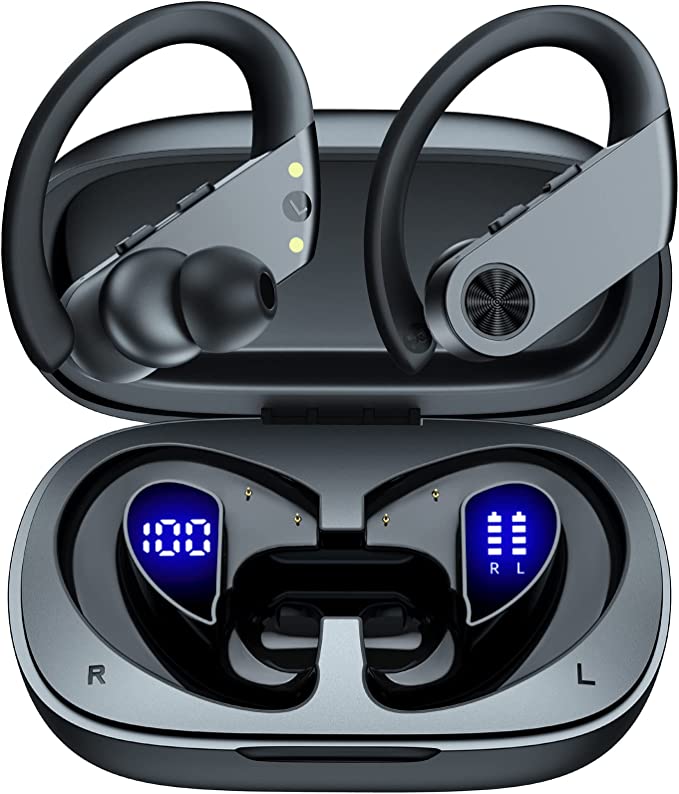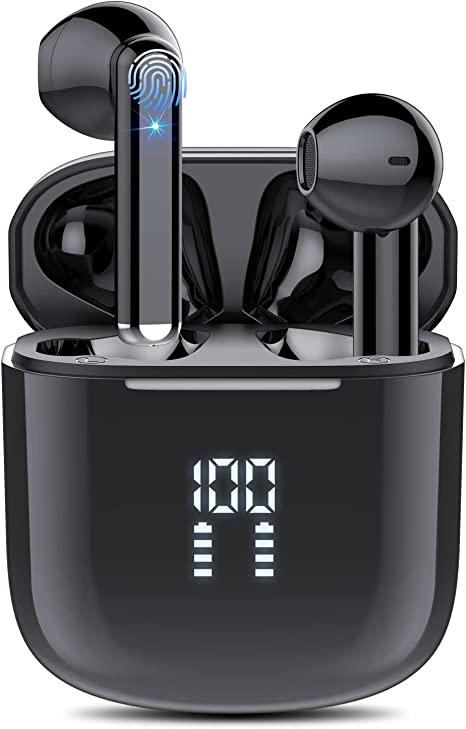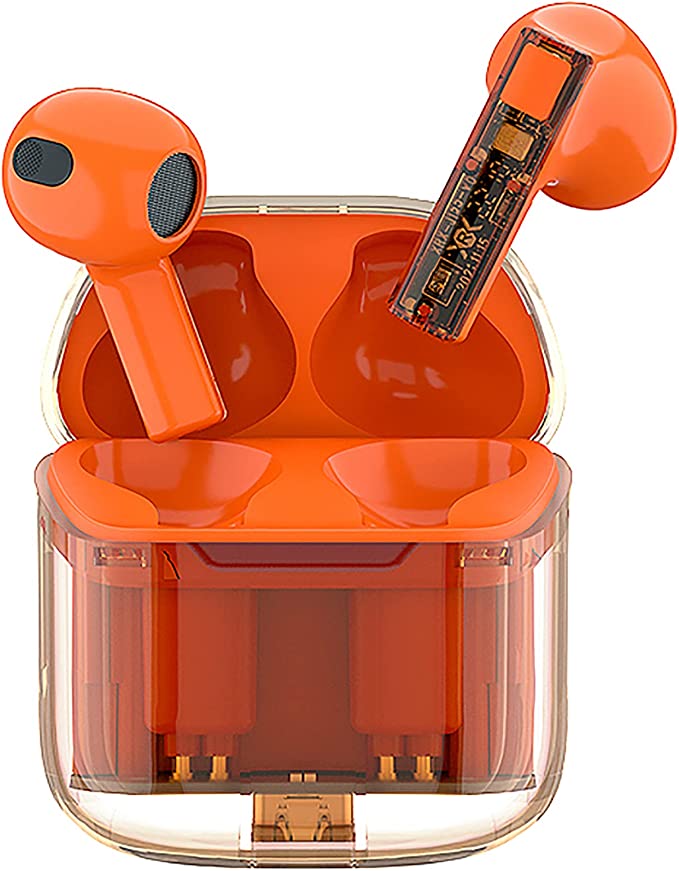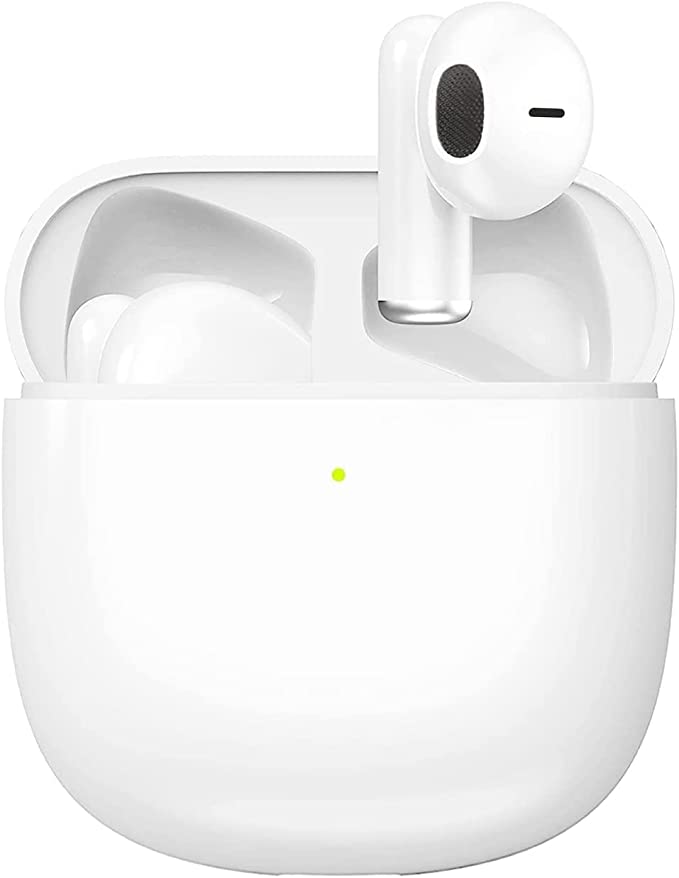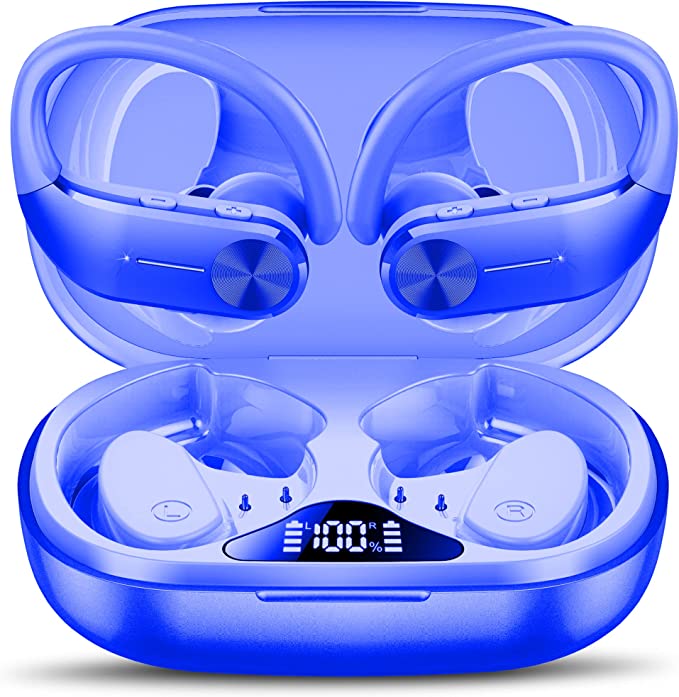Catitru T16 Wireless Earbuds: The Science of All-Day Audio, Secure Fit, and Workout-Ready Durability
Update on April 29, 2025, 5:48 a.m.
We live in an era of remarkable technological miniaturization. Take the modern wireless earbud – a tiny device that slips comfortably into our ears, yet delivers vast soundscapes, connects us seamlessly across distances, and often withstands the rigors of daily life. It seems almost effortless, doesn’t it? But beneath that smooth plastic shell lies a complex interplay of physics, engineering, material science, and sophisticated electronics. Using the Catitru T16 wireless earbuds as our case study, based on the information provided about them, let’s pull back the curtain and explore the fascinating science and technology that make these everyday companions possible.
(Important Disclaimer: Please be aware that all specific features, performance metrics, and certifications mentioned regarding the Catitru T16 model are based solely on the product description text provided. This information has not been independently verified. This article aims to explain the general scientific and technological principles behind such features, using the T16’s description as a reference point.)

Anchored in Place: The Science of Fit, Comfort, and Resilience
Before we even talk about sound, the first interaction with any earbud is physical. Does it stay put? Is it comfortable? Can it handle life’s little (or sweaty) messes? These aren’t trivial points; they’re grounded in smart design and material choices.
The Earhook Advantage: Beyond Aesthetics – Physics of Stability
The Catitru T16 description highlights over-ear earhooks, described as “elastic and soft.” For anyone who’s experienced the frustration of an earbud dislodging mid-workout or during a sudden head turn, the appeal is obvious. But it’s not just about looks; it’s applied physics. Think of your outer ear (the pinna) as a natural anchor point. An earhook leverages this structure. By distributing the earbud’s weight and providing an additional contact point that curves securely over the ear, it significantly increases stability against the forces of gravity and motion – like the jostling during a run or the vibrations from chewing. It’s a simple concept, elegantly applied to keep the music playing, uninterrupted.
Material Matters: Elasticity and Softness for Comfort
The description specifies “elastic and soft” materials for these hooks. Material science plays a crucial role here. Elasticity allows the hook to conform to different ear shapes without exerting excessive pressure, while softness enhances comfort during extended wear. Finding the right balance is key – too rigid, and it’s uncomfortable; too flimsy, and it compromises stability. The goal is a secure fit that you almost forget is there.
The Critical Seal: Why Eartip Size Impacts Sound and Isolation
Moving inward, the T16, like most earbuds, reportedly comes with three different sizes of ear tips. Finding the perfect fit isn’t just about comfort; it’s fundamental to the audio experience itself. The ear tip creates a seal within your ear canal. Why is this seal so important? Two main reasons:
- Bass Response: Low-frequency sound waves (bass) require a sealed environment to be perceived effectively by your ear. A poor seal allows bass frequencies to leak out, resulting in thin or weak-sounding audio. It’s like trying to appreciate the rumble of a subwoofer in a room with all the doors and windows wide open.
- Passive Noise Isolation: A snug-fitting ear tip acts as a physical barrier, blocking a significant amount of external ambient noise – think of it as a rudimentary earplug. This ‘passive’ isolation allows you to listen at lower volumes (better for your hearing!) and become more immersed in your audio without cranking up the sound to overcome background chatter or traffic noise.
Getting the eartip size right is perhaps the single most important adjustment a user can make to optimize both comfort and sound quality for any in-ear headphone.
Braving the Elements: Demystifying the IPX7 Waterproof Rating
Life happens. Sweat happens. Rain happens. The T16 description claims an IPX7 waterproof rating. This isn’t just marketing fluff; “IP” stands for Ingress Protection, and it’s defined by an international standard (IEC 60529). The ‘X’ means it hasn’t been rated for dust ingress (or the rating isn’t specified), but the ‘7’ signifies a high level of water protection.
What does IPX7 specifically mean? It means the device has been tested to withstand submersion in fresh water up to 1 meter deep for 30 minutes under standardized laboratory conditions. This rigorous testing provides assurance against common culprits like heavy sweat during intense workouts or getting caught in a downpour. It’s the science of seals and gaskets working at a miniature scale to protect the delicate electronics within. However, it’s crucial to understand the limits: IPX7 doesn’t typically cover saltwater or chlorinated water, nor does it imply suitability for swimming or high-pressure water jets. But for the everyday encounters with moisture that active users face, an IPX7 rating offers significant peace of mind.

Crafting Your Soundscape: Audio Delivery and Clear Communication
With the earbuds securely and comfortably in place, we arrive at their primary function: delivering audio. How do these tiny devices create rich sound, and how well do they handle phone calls?
The Heart of the Sound: Understanding Speaker Drivers
The T16 is said to feature 14.2mm speaker drivers. The driver is the engine of the earbud, the component that vibrates to create the sound waves reaching your eardrum. In simple terms, it’s a miniature loudspeaker. The size of the driver diaphragm (the vibrating surface), in this case 14.2mm, does have physical implications. A larger diaphragm can, theoretically, move more air. Moving more air is particularly important for reproducing low-frequency sounds (bass) effectively and potentially achieving higher overall volume levels.
However, size isn’t everything. Think of it like comparing engine sizes in cars – a bigger engine can produce more power, but the car’s overall performance depends heavily on the transmission, suspension, and tuning. Similarly, earbud sound quality is critically dependent on the driver’s material, its magnetic structure, the acoustic enclosure design, and, perhaps most importantly, the electronic tuning (how the audio signal is processed before it reaches the driver). The T16 description claims a “well-balanced and exceptional sound,” aiming for crispness and immersion – achieving this balance across the frequency spectrum (lows, mids, highs) is the art of audio engineering.
Capturing Your Voice: Microphones in Miniature
For calls, earbuds need microphones. These are typically tiny MEMS (Micro-Electro-Mechanical Systems) microphones, marvels of miniaturization that convert the pressure waves of your voice back into electrical signals. Their placement and integration are key to picking up your voice clearly.
The Challenge of Clarity: Untangling Noise Filtering Claims
The product description mentions a built-in microphone and that the “snug fit design will effectively filters out noise during calls.” This touches upon two aspects of call clarity:
- Passive Isolation: As discussed with eartips, a good seal physically blocks some external noise from reaching both your ears and the microphone, which helps improve the signal-to-noise ratio (your voice vs. background sound).
- Active Filtering (Claimed): The phrase “filters out noise” suggests some form of active processing might be involved, beyond just the physical seal. Noise filtering technologies in earbuds can range from simple algorithms that try to suppress steady background noise (like hums or fans) to more complex systems involving multiple microphones (beamforming) that attempt to isolate the speaker’s voice directionally. The effectiveness of these technologies varies greatly depending on the sophistication of the algorithms and the hardware used. Without specific details on the technology employed in the T16, we understand the goal is to make your voice clearer to the person on the other end, especially in noisy environments – a common challenge for small, wearable devices.

The Unseen Signals: Mastering Wireless Connections and Power
All this functionality relies on invisible connections and dependable power sources – the unsung heroes of the wireless experience.
Untethered Freedom: The Evolution and Function of Bluetooth 5.3
The T16 utilizes Bluetooth 5.3. Bluetooth technology has come a long way since its inception in the late 1990s, initially conceived as a way to replace cables between mobile phones and headsets. It operates in the crowded 2.4 GHz ISM band (Industrial, Scientific, and Medical) – the same neighbourhood used by Wi-Fi, microwaves, and other devices. To coexist, Bluetooth employs a clever technique called Frequency-Hopping Spread Spectrum (FHSS). Imagine rapidly switching between dozens of radio channels hundreds of times per second according to a pseudo-random sequence known only to the paired devices. This makes the connection robust against interference.
Bluetooth 5.3 represents a refinement of the standard. Compared to older versions like 4.x, Bluetooth 5.x iterations generally offer tangible benefits: * Faster Pairing & Connection: Establishing the initial handshake between devices is often quicker. * Improved Stability: Connections tend to be more resilient against dropouts, partly due to better interference handling. * Potentially Lower Latency: While not always guaranteed and dependent on implementation, newer standards can reduce the delay between audio source and playback, which is beneficial for videos and gaming. * Potential Power Efficiency Gains: Newer versions often include features designed to reduce power consumption, contributing to longer battery life (though this also depends heavily on usage patterns and specific device implementation).
The T16 description mentions “seamless pairing” and auto-connection after the first setup, leveraging these standard Bluetooth capabilities for user convenience.
Speaking the Universal Language: Bluetooth Compatibility
A key strength of Bluetooth is its standardization. The claim that the T16 is “widely compatible with most Bluetooth-enabled devices including iPhone or Android or Windows, iPad, smart TV, laptop, tablets etc.” reflects this. As long as a source device (like your phone or laptop) supports the necessary Bluetooth audio profiles (like A2DP for stereo audio), it should be able to connect, regardless of the brand or operating system.
The Engine of Endurance: Decoding Battery Capacity and Playtime
Wireless freedom demands power. The T16 reportedly offers up to 8 hours of playtime on a single charge (at 50-60% volume) from its 70mAh earbud batteries, extendable to a total of approximately 90 hours using the 600mAh charging case. Let’s unpack this:
- mAh (milliamp-hour): This unit measures electric charge and represents the battery’s capacity – how much energy it can store. Think of the 70mAh in each bud as a small fuel tank for a few hours of driving, and the 600mAh case as a much larger portable jerrycan.
- Lithium-Ion Chemistry: Most modern earbuds use Lithium-Ion (Li-ion) batteries due to their high energy density (storing a lot of energy in a small, light package) and rechargeability.
- The Volume Factor: The 8-hour claim comes with a crucial asterisk: “at 50%-60% volume.” Playback volume is one of the biggest drains on battery life. Higher volume requires the audio drivers to work harder, consuming significantly more power. Other factors like the Bluetooth codec used, distance from the source device, and even ambient temperature can also influence real-world battery performance.
- The Charging Case Ecosystem: The charging case is more than just storage; it’s an essential part of the power system, acting as a portable power bank to top up the earbuds multiple times on the go.
Powering Up: The Charging Case Ecosystem & Type-C Convenience
The convenience of the charging case is further enhanced by the claimed external LED display, allowing users to quickly check the case’s remaining charge without opening it. The specification of a Type-C charging port aligns with the modern standard for consumer electronics. USB Type-C offers a reversible connector (no more fumbling to plug it in the right way) and typically supports faster charging protocols compared to older standards like Micro-USB, getting the case (and subsequently the earbuds) back into action more quickly.

Effortless Interaction and Broader Considerations
Beyond the core functions, usability and wider impact also matter.
Control at Your Fingertips: The Magic of Touch Controls
The T16 description mentions “sensitive touch control” for managing music playback, volume, and calls. This likely utilizes capacitive sensing technology. Tiny sensors embedded in the earbud’s surface detect the change in electrical capacitance caused by the touch of your finger (your body holds a natural electrical charge). This allows for a button-free design, potentially improving water resistance and offering a sleek aesthetic. The challenge lies in designing the touch interface to be intuitive and responsive without being overly sensitive to accidental touches.
Beyond the Sound: Acknowledging Sustainability Claims
In an increasingly environmentally conscious world, the claim of being “CarbonFree Certified” is noteworthy. While we cannot verify the specifics of this certification for the T16 from the provided text, such certifications generally indicate that an organization (like Carbonfund.org, the issuer of “Carbonfree”) has measured the product’s lifecycle carbon emissions (from manufacturing and materials to transportation, usage, and disposal), implemented reduction strategies, and offset the remaining unavoidable emissions by investing in projects like reforestation or renewable energy. It reflects an effort to take responsibility for the product’s environmental footprint, aligning with growing consumer interest in sustainable practices.

Conclusion: The Integrated Experience
As we’ve seen, a seemingly simple pair of wireless earbuds like the Catitru T16 (based on its description) is a testament to the integration of diverse technologies. From the physics ensuring a stable fit and the material science providing comfort and durability (IPX7), to the intricate workings of audio drivers and microphones, the seamless connectivity of Bluetooth 5.3, and the careful management of power in tiny Li-ion batteries – each element plays a vital role.
Understanding the science behind these features doesn’t just demystify the technology; it empowers us as users. It helps us appreciate the engineering involved, interpret specifications more accurately, and make more informed choices about the devices that accompany us through our daily soundscapes. The next time you pop in your earbuds, take a moment to consider the hidden symphony of science and engineering working together, right there in your ear.
